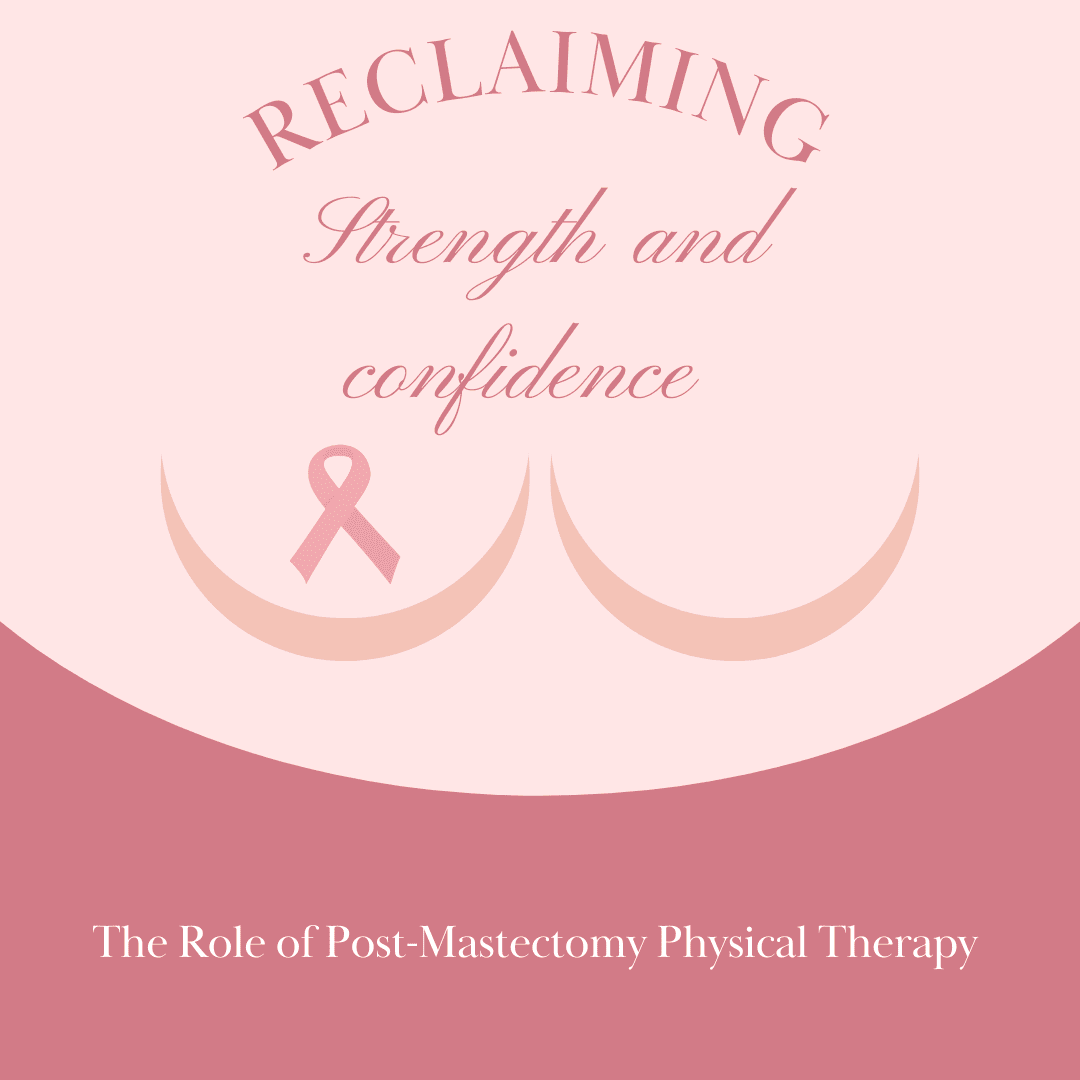Reclaiming Strength and Confidence: The Role of Post-Mastectomy Physical Therapy
Undergoing a mastectomy, the surgical removal of one or both breasts, can be a life-altering experience for individuals facing breast cancer or other medical conditions. While the procedure may be necessary for treatment or risk reduction, it can significantly impact a person’s physical, emotional, and psychological well-being. In this blog, we will explore the importance of post-mastectomy physical therapy as an integral part of the recovery process and discuss the benefits it offers for restoring strength, mobility, and confidence.
Understanding the Challenges
The removal of breast tissue and subsequent surgical reconstruction or prosthetic use can lead to several challenges for individuals post-mastectomy. Common issues include reduced range of motion, shoulder pain and stiffness, lymphedema (swelling due to lymphatic system disruption), and muscle weakness. Additionally, the emotional toll and body image concerns associated with the procedure can further impact a person’s overall recovery.
The Role of Post-Mastectomy Physical Therapy
Post-mastectomy physical therapy plays a crucial role in helping individuals regain physical function, address discomfort, and improve their quality of life. It is a specialized form of rehabilitation that focuses on the unique needs and challenges faced by patients after breast surgery. By collaborating closely with the medical team, physical therapists develop tailored treatment plans to address specific limitations and promote optimal recovery.
Restoring Range of Motion and Strength
One of the primary goals of post-mastectomy physical therapy is to restore range of motion and strength in the upper body. Physical therapists employ a variety of techniques, including manual therapy, stretching exercises, and targeted strengthening exercises, to help patients regain flexibility and build muscle strength in the affected areas. These exercises not only enhance physical function but also alleviate pain and reduce the risk of long-term complications.
Managing Lymphedema
Lymphedema, a common side effect of breast surgery, is the accumulation of lymph fluid in the tissues, leading to swelling and discomfort. Post-mastectomy physical therapy often incorporates specialized techniques to manage and reduce lymphedema. Therapists may employ manual lymphatic drainage, compression bandaging, and therapeutic exercises to facilitate fluid drainage and promote healing. Education on self-care techniques and the use of compression garments may also be provided to empower patients in managing their condition.
Addressing Scar Tissue and Body Image Concerns
Surgical scars resulting from mastectomy can contribute to physical and emotional challenges for individuals. Physical therapists can help address scar tissue tightness and promote healing through scar massage techniques and specific exercises. Furthermore, they can provide emotional support and guidance to help patients navigate body image concerns, fostering self-acceptance and confidence.
Promoting Overall Wellness
Post-mastectomy physical therapy encompasses more than just physical rehabilitation. It takes into account the holistic well-being of the individual, aiming to improve overall wellness. Physical therapists often collaborate with other healthcare professionals, such as psychologists and occupational therapists, to provide a comprehensive approach to recovery. This may include counseling, pain management strategies, ergonomic assessments, and recommendations for adaptive devices to facilitate daily activities.
Post-mastectomy physical therapy plays a vital role in the journey of recovery for individuals who have undergone mastectomy surgery. By addressing physical limitations, managing lymphedema, promoting scar tissue healing, and supporting emotional well-being, physical therapists provide valuable guidance and assistance throughout the rehabilitation process. Through their expertise, individuals can reclaim their strength, regain confidence, and embrace a fulfilling life after mastectomy.

